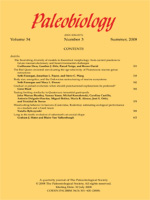The Caune de l'Arago Cave (southern France) has yielded one of the best preserved and best documented sedimentary successions of the European Middle Pleistocene (Oxygen Isotopic Stages 14 to 12). Herbivorous ungulates (horse, reindeer, red deer, fallow deer, bison, musk ox, argali, and tahr) are well represented in the three major stratigraphic units CM1, CM2, and CM3. CM1 and CM3 correspond to cold and dry climate and CM2 represents temperate and humid environmental conditions. Dental microwear and mesowear analyses were performed for the ungulates from CM1–3 to test whether these methods of dental wear evaluation were suitable for detecting climate-driven changes in the dietary resources of the Arago ungulate community. We found that both dental mesowear and microwear indicate dietary traits and their relationship to climatic conditions as reflected by vegetation cover and community structure. In all units, even if some species seem to share habitats or resources, it appears that the overlap in their feeding ecology is very low. The CM1 and CM3 units, where pollen analysis indicates that the climate was cold and dry, show the lowest diversity in dietary traits. The CM2, where climate is known to be more temperate and humid, the spectrum of dietary traits is large—grazers, browsers, and mixed feeders are present.
How to translate text using browser tools
1 January 2008
Climate-related dietary diversity of the ungulate faunas from the middle Pleistocene succession (OIS 14-12) at the Caune de l'Arago (France)
Florent Rivals,
Ellen Schulz,
Thomas M. Kaiser
ACCESS THE FULL ARTICLE

Paleobiology
Vol. 34 • No. 1
January 2008
Vol. 34 • No. 1
January 2008




